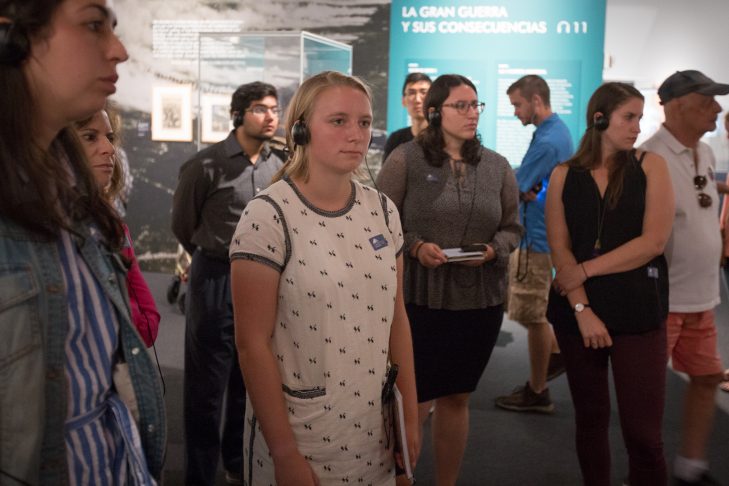I have always loved stories. When I learned to write my full name, I first wrote that string of letters on a library card. I couldn’t read the books on the shelves yet, but even then I realized it wasn’t about the words, it was about the potential. The world around me contained multitudes of stories, organizing itself into more narratives than could possibly be contained in written volumes. I have spent so much time reading and writing and living stories that it is easy to forget that stories are not real, even the ones that feel the most inherent to our being. Stories are only a way for us to make sense of what is real, a way to catalog our complex world into a series of beginnings, middles and ends. This makes stories a fragile thing as they exist only as we tell them. Stories exist like air, real to us only in the way we sense them, invisible yet undeniable in the way they make us feel.
The past becomes history when we only shape it into the form of a story. History relies on narratives to make sense of dates and places and events, both on a global and an individual scale. In its telling of the history of Auschwitz, the temporary exhibit at the Museum of Jewish Heritage in New York is nothing if not a recognition of the power of stories as instruments of violence and as vessels of hope.
Like all well-told stories, the exhibit starts at the beginning. Not with the horrors of the camp and its devastation, but with the weaponization of a story. World War II ended with the use of the first atomic bombs, the most destructive military implement yet invented by humankind. But Hitler’s rise to power and the resulting decade of violence relied on one of humanity’s oldest inventions, albeit used in remarkably insidious and efficient ways. Hitler and the Nazi Party relied on a story, a simple narrative about the superiority of the aryan race, which warped into a call of violence against all those marked as “other.” The free radios given to German citizens that only tuned into the state propaganda channel and the children’s story books that compared the Jewish people to poison were weapons as violent as any other. Maybe there’s a reason we use “loaded” to describe both words and guns.
Related
Bearing witness to these stories is an honor, but they share the exhibit’s space with tales that cannot be known. It is comforting to seek out the stories with redemptive endings and clear morals, but the tragedy of Auschwitz is the million stories that were never finished. Looking at the unlabeled family photos found among the belongings of those brought by box car to the camp, I wondered what stories these unknown people told themselves about who they were and who they were going to be. The photos could only answer to the unbearable tragedy that the story of dehumanization that Hitler told was able to erase these narratives, forcing these people to be characters in a plot of unimaginable violence.
Faced with these stolen stories, it feels like we can only speculate and grieve. But we can also find power in our responsibility to tell this painful history. We must be diligent because although the past cannot be changed, history is ours to create. History is a story we continue to write every day. Stories are not objects that can be held, yet they weigh on us heavily. We must carry this weight together because only then can we have the strength to justly narrate our past.
Emerging from the exhibit, I was reminded that stories do not just define our past, but also our future. The Museum of Jewish Heritage sits alongside Battery Park, and from the fourth-floor window I could see the Statue of Liberty standing watch. The statue is the illustration that accompanies our national story, the one that casts our country as the home of the free and land of the brave. This story is not truth, at least not yet. Our nation has always faced difficult moral questions, but lately it’s felt like we are unraveling. The injustices within our communities and along our borders are a sickening plot twist to the narrative of the Constitution and its promise that all men are created equal. Using the lessons of history, we must tell ourselves a story of equality and justice and then we must fight to live this as truth. We must treat this task with humility and care because as individuals and as a collective people, who we are—and who we are destined to become—is determined by the stories we tell.
Elizabeth Hopkinson is a student at Yale University.
Originally published here.




